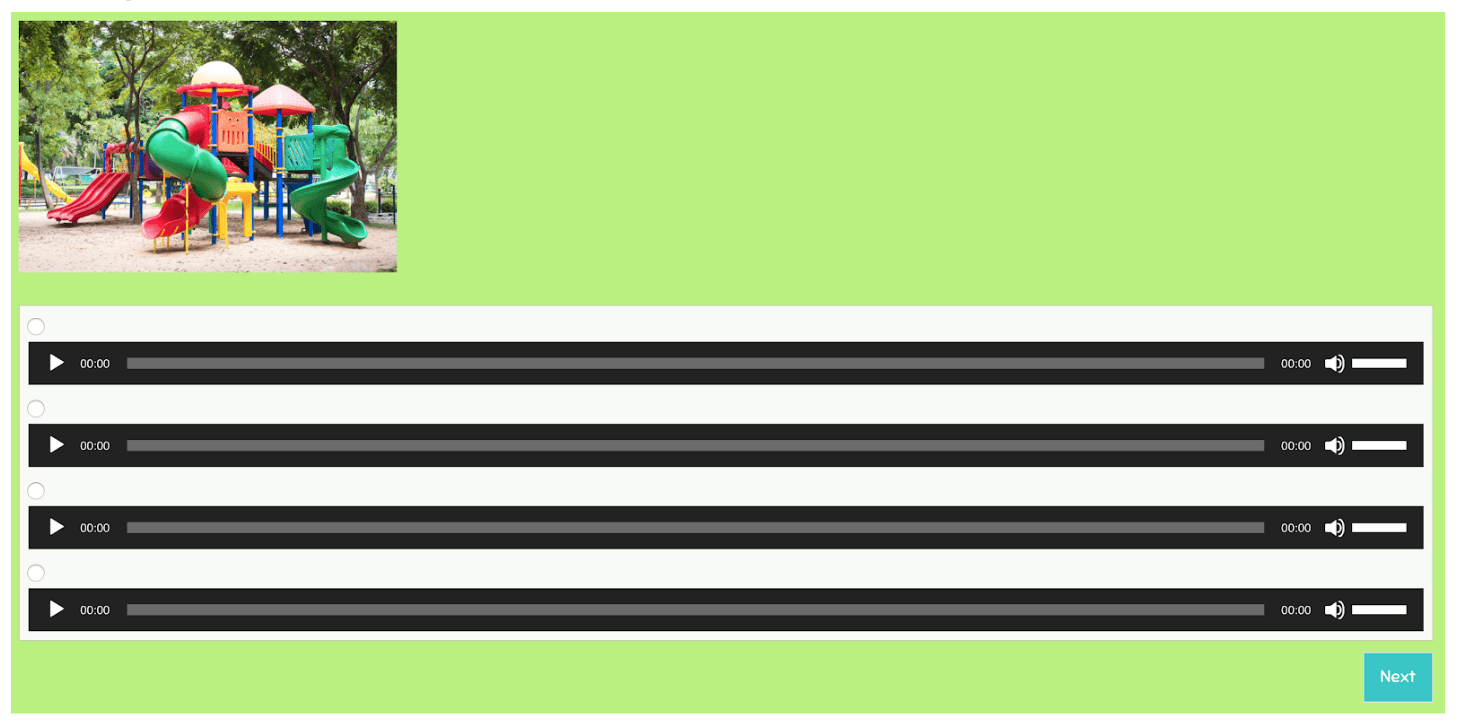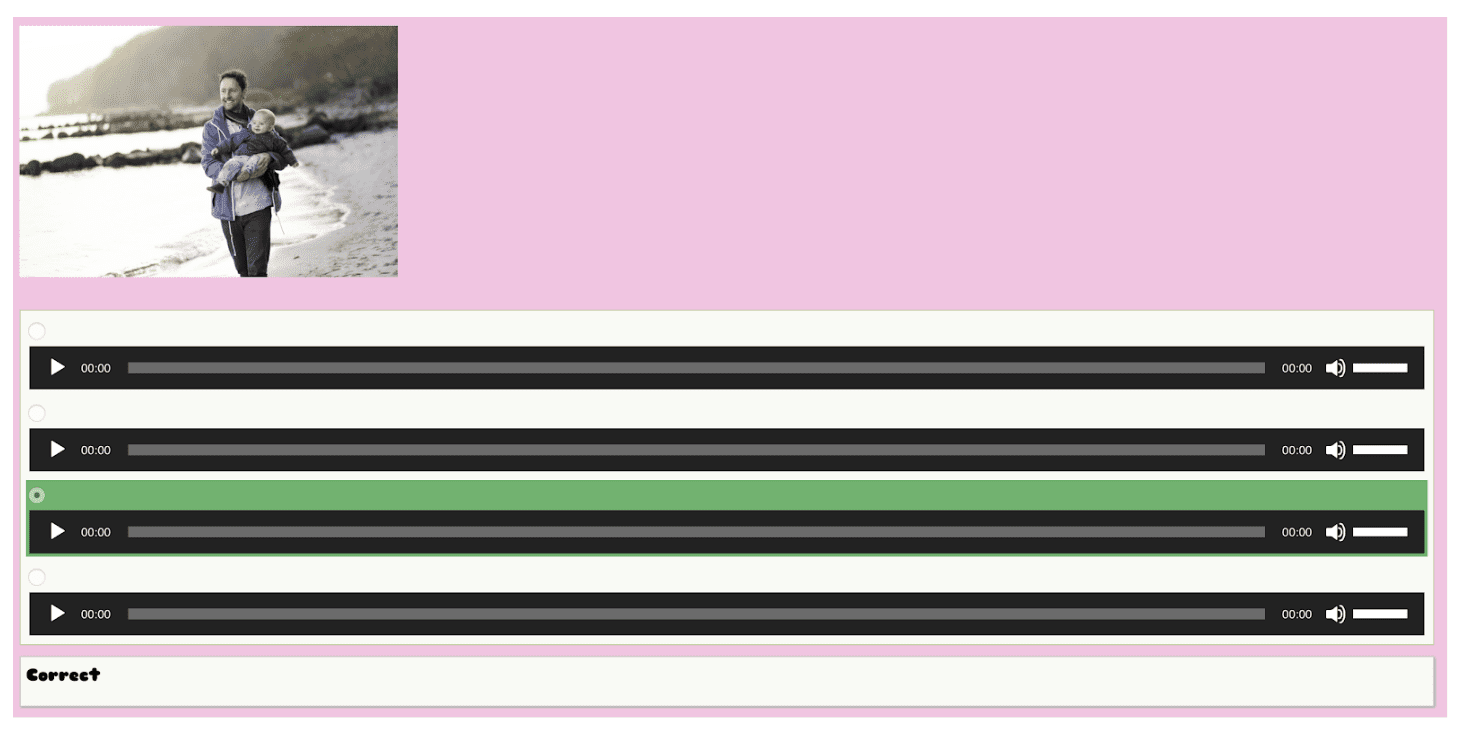Little Sponges Gradebook and How to Use It
This guide will explain how to access Little Sponges assessments, quizzes and Gradebook. If you have any questions, please do not hesitate to contact us!
In order to track the overall progress of your students, it is best to have them take the Little Sponges pre-assessment prior to beginning the program, and the post-assessment after they have completed either the program or the school year. To access the pre and post assessment pages, you must now go to the adventure map.

By clicking on the “?” bubble at the top-left and bottom-right of the page, you will be taken to the assessment home page. Here you must select the appropriate language and level assessment you wish to take. The levels are roughly split up by grade, beginning with speaking comprehension and going through literacy. However, individual judgement by the teacher will provide the best fit for each student. For instance, if a first grade student is fluent in English, but only beginning to learn Spanish, it is best to test them on the 3rd level for English and 1st level for Spanish.

It’s time to learn!
The core structure of the adventure modules remains the same. Students should begin by watching the learning video, then practice by reviewing the new vocabulary both in class and with our additional vocabulary videos and games.
Once students practice enough, they have the new option to take a quiz to quantify what they have learned. These quizzes are made up of twenty questions that test students on material covered in that module’s learning video, and can be accessed from the main adventure page.
For example, these are the access points for the Playground Adventure. Each learning module has two sets of quizzes – Listening and Comprehension and Reading and Comprehension. In the Listening and Comprehension quiz students will see a picture with four audio options. After listening to each audio clip, they must choose the one that best matches the picture. The Reading and Comprehension quiz follows a similar structure, except that the student must now read each option and choose the corresponding vocabulary.
Listening and Comprehension Example

Reading and Comprehension Example

At the end of each quiz, students and teachers can see the score (see example below).

Also, students have the option to see which questions they got correctly and incorrectly. The correct answers are highlighted in green. If the student answered the question incorrectly, the incorrect answer is highlighted in red and the correct answer is highlighted in green. This enables the students to recognize their mistakes and self-correct.
Examples:


Gradebook
The scores are automatically recorded in the Little Sponges system. Teachers and administrators can see the scores for their students by going to the Gradebook via the Little Sponges website menu.

Students can access their scores by clicking on the checkmark icon at the bottom of the Adventure Map.

The gradebook has six sections:
- L1 and L2 Pre-Assessments Scores
- L1 Listening and Comprehension Quiz Scores
- L2 Listening and Comprehension Quiz Scores
- L1 Reading and Comprehension Quiz Scores
- L2 Reading and Comprehension Quiz Scores
- L1 and L2 Post-Assessments Scores
Once students take the pre-assessments you can see their scores in their gradebook. If the students are using Little Sponges program for more than one year, you’ll have scores for multiple levels. For example, if your students started Little Sponges program in PreK and continued to use the program in kindergarten, you will see a score for Level 1 and Level 2 assessments. This allows you to see their progress over a long period of time.
The quizzes are grouped by language and skill. For example, you can look at scores in English only or in Spanish only or you can look at both. Likewise, you can look at the listening and comprehension scores as students start the program and then, analyze the reading and comprehension scores later when students advance through the program.
At the end of the learning period (i.e. school year, summer program, etc) students take post-assessments. Once they complete the post-assessments, the scores are shown in the gradebook. This allows teachers, administrators and parents to see how much progress the student has made overtime. For example, if the student’s pre-assessment score in English was 65% and their post-assessment score was 95%, he/she made 46% improvement over the course of the school year.
Formula: improvement = (post score-pre score)/pre score = (95%-65%)/65=46%
During the school year, students can see their overall progress for each Adventure module by clicking on the checkmark icon at the bottom of their map. They can see which topics they excel at and which they may need more practice in. If the student does not do well on the quiz, he/she can go back to videos and games for more practice and retake the quiz. This way, they have the opportunity to work on their specific gaps in knowledge and prepare to do well on the post assessment. The goal is for each student to reach mastery level (100% score) in each learning adventure. The advantage of technology based instruction is that students can be exposed to the content and the language as much as necessary. Students should continue to practice in class, at home and on the go until they’ve had enough exposure and repetition to master the skills.

Upon signing up with the Little Sponges program, each student and teacher will be given log-in information. Then, all students in that teacher’s class will be assigned to their own gradebook group. A dropdown box, shown here as “Test Group,” will allow teachers to cycle through their classrooms, if they have multiple.
In the dropdown box at the top-left of the pictures below, teachers can select one of the six categories. As an example, the first picture shows the pre-assessment scores for this “class,” and the second picture shows the Spanish reading comprehension quizzes.


It is important to note that the gradebook only records a student’s latest attempt, not an average of all their attempts at a single quiz. Many students will naturally wish to take the quizzes more than once to improve their score. This gives them the repetition needed for language retention, and we encourage teachers to allow this behavior.
We hope this has been helpful overview of our Gradebook and assessment system. As always, if you have any questions, please do not hesitate to contact us!
